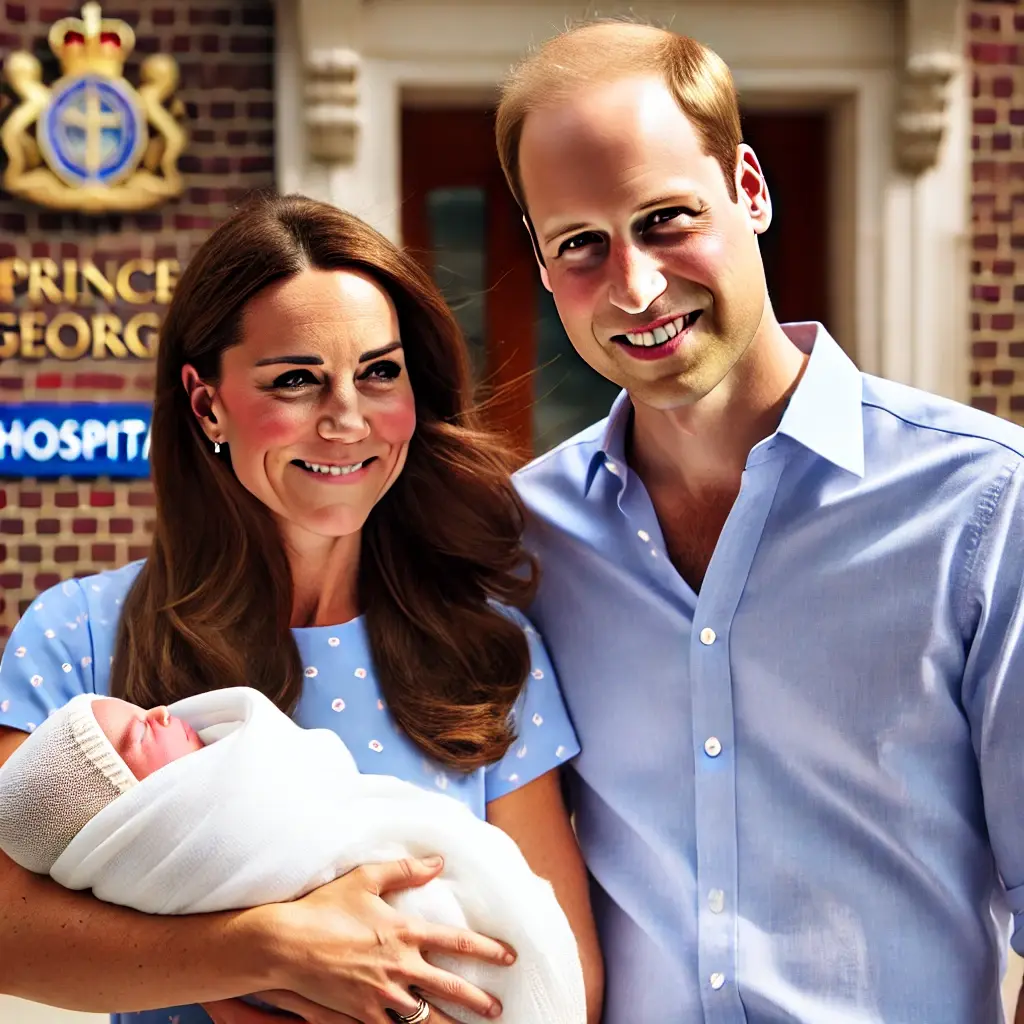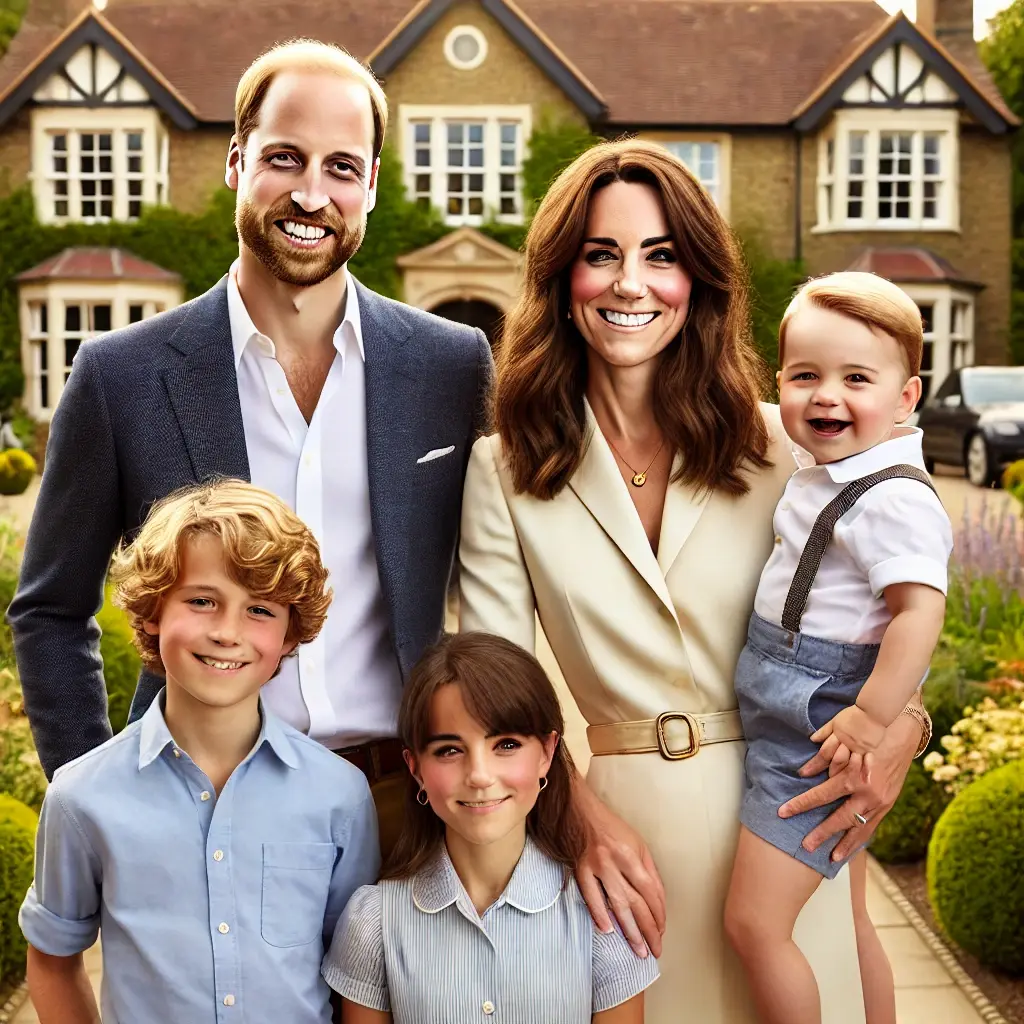Prince George, the first child of Prince William and Kate Middleton, the Duke and Duchess of Cambridge, was born on July 22, 2013. His birth was celebrated across the United Kingdom and the Commonwealth, as he became third in line to the British throne. The arrival of Prince George was a moment of national pride and joy, heralding a new generation of the British royal family. His birth received global media attention, highlighting the enduring public interest in the royal family and its future.

The anticipation surrounding the birth of Prince George was palpable, with media outlets from around the world camped outside St. Mary’s Hospital in London, where the Duchess of Cambridge was admitted. The hospital’s Lindo Wing had previously hosted the births of Prince William and Prince Harry, adding a sense of tradition and continuity to the event. When the news broke that Kate had gone into labor, a sense of excitement spread across the globe.
After several hours of labor, the announcement was made that the Duchess had given birth to a healthy baby boy weighing 8 pounds, 6 ounces. The news was met with widespread celebration, with crowds gathering outside Buckingham Palace and other royal residences to share in the joy. The birth was formally announced in traditional fashion with a bulletin placed on an easel outside Buckingham Palace, a practice that dates back to the early 19th century.
The baby was named George Alexander Louis, a name rich in royal history. George is a name associated with six previous British monarchs, including George VI, the father of Queen Elizabeth II. Alexander is believed to be a tribute to the Queen, whose middle name is Alexandra. Louis is one of Prince William’s middle names and also honors Lord Louis Mountbatten, a beloved relative of Prince Charles.
The birth of Prince George was seen as a unifying moment for the United Kingdom, bringing together people of all ages and backgrounds in celebration. It also marked a new chapter for the British royal family, with Prince George representing the future of the monarchy. As third in line to the throne, after his grandfather Prince Charles and his father Prince William, George’s arrival ensured the continuity of the royal lineage.
The global media frenzy surrounding Prince George’s birth was a testament to the enduring fascination with the British royal family. News outlets from around the world provided extensive coverage, and the birth dominated headlines for days. Social media was abuzz with congratulatory messages from world leaders, celebrities, and royal enthusiasts, reflecting the widespread admiration and interest in the new royal baby.
In the weeks following his birth, Prince George made his first public appearance when his parents left the hospital to introduce him to the world. The image of the Duke and Duchess of Cambridge standing on the steps of the Lindo Wing, proudly holding their newborn son, became an iconic moment. Kate Middleton’s choice of a blue polka-dot dress echoed the outfit worn by Princess Diana when she introduced newborn Prince William to the public, drawing comparisons and highlighting the continuity within the royal family.
Prince George’s christening, held on October 23, 2013, at the Chapel Royal in St. James’s Palace, was another significant event. The christening was attended by close family and friends, including the Queen and Prince Philip, as well as Prince Charles and Camilla, Duchess of Cornwall, and Prince Harry. The ceremony was conducted by the Archbishop of Canterbury, Justin Welby, and featured water from the River Jordan, a tradition for royal christenings.
As Prince George grew, his appearances at public events and official engagements provided glimpses into his personality and development. His playful demeanor and endearing moments with his parents and younger siblings, Princess Charlotte and Prince Louis, endeared him to the public. Each milestone, from his first day of school to family outings, was widely covered by the media, reflecting the public’s interest in his upbringing and future role.
The birth of Prince George also had a positive economic impact, often referred to as the “royal baby effect.” Retailers saw a surge in sales of baby-related products, from clothing to nursery items, as parents sought to emulate the royal style. This phenomenon underscored the influence of the royal family on fashion and consumer trends, particularly among younger generations.
In addition to his role within the royal family, Prince George’s birth was significant in the context of the modernization of the British monarchy. His arrival came at a time when the monarchy was evolving to become more accessible and relatable. The Duke and Duchess of Cambridge have embraced a more hands-on approach to parenting, balancing royal duties with a desire to provide their children with a sense of normalcy.
The birth of Prince George also highlighted the changing attitudes toward the royal family. While there remains a strong sense of tradition and reverence, there is also a growing appreciation for the personal lives and challenges faced by the royals. The public’s affection for Prince George and his siblings is a reflection of this evolving relationship between the monarchy and the people.

As Prince George continues to grow, he will undoubtedly face the pressures and responsibilities that come with his position. However, he is also part of a new generation of royals who are navigating their roles in a rapidly changing world. The upbringing and values instilled in him by his parents will play a crucial role in shaping his future as a member of the royal family.
The birth of Prince George was more than just a royal event; it was a moment that brought joy and unity to many. It reaffirmed the enduring appeal of the British monarchy and set the stage for the next chapter in the royal family’s history. As Prince George grows into his role, he carries with him the hopes and expectations of a nation, symbolizing continuity and the future of the monarchy.
